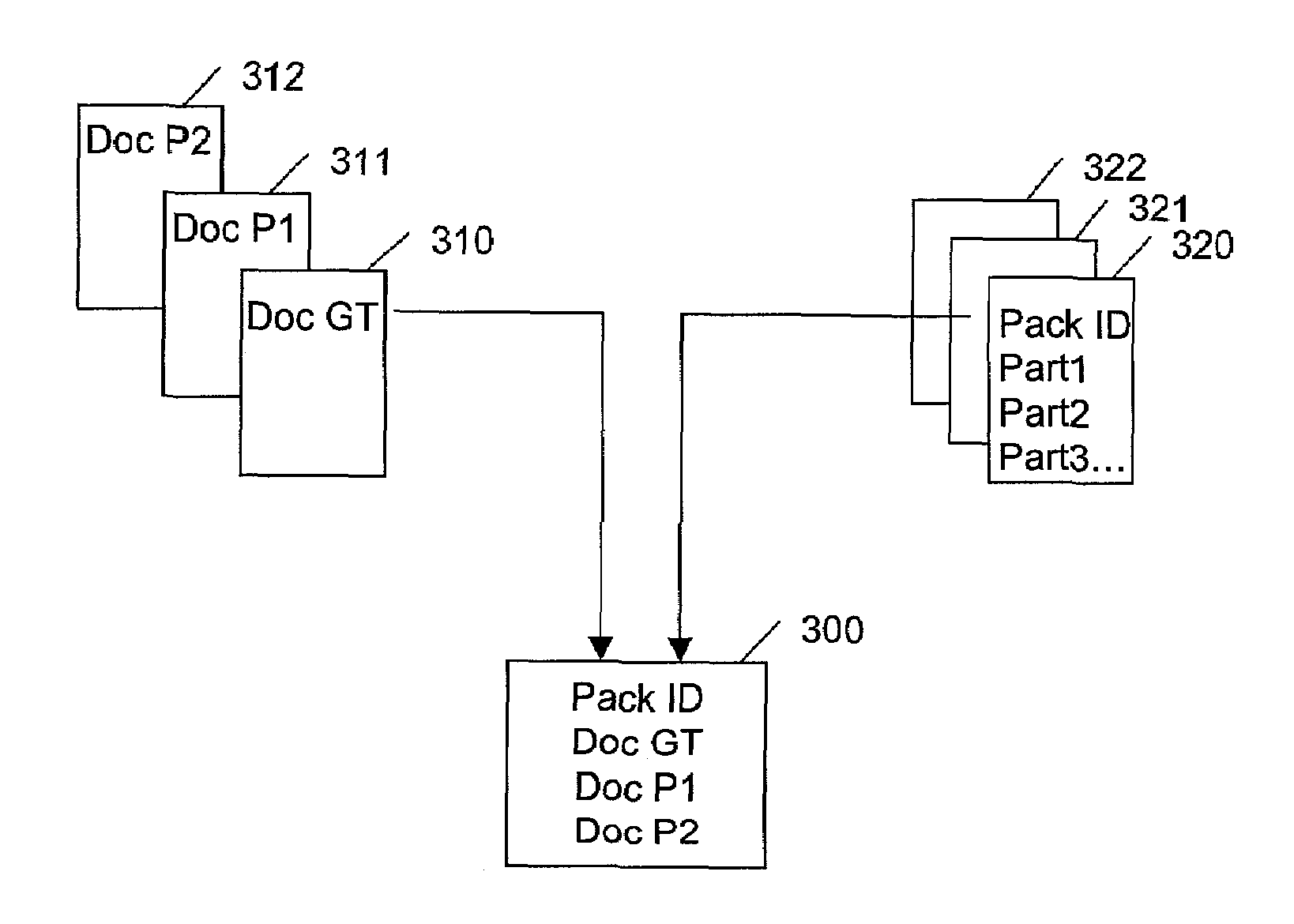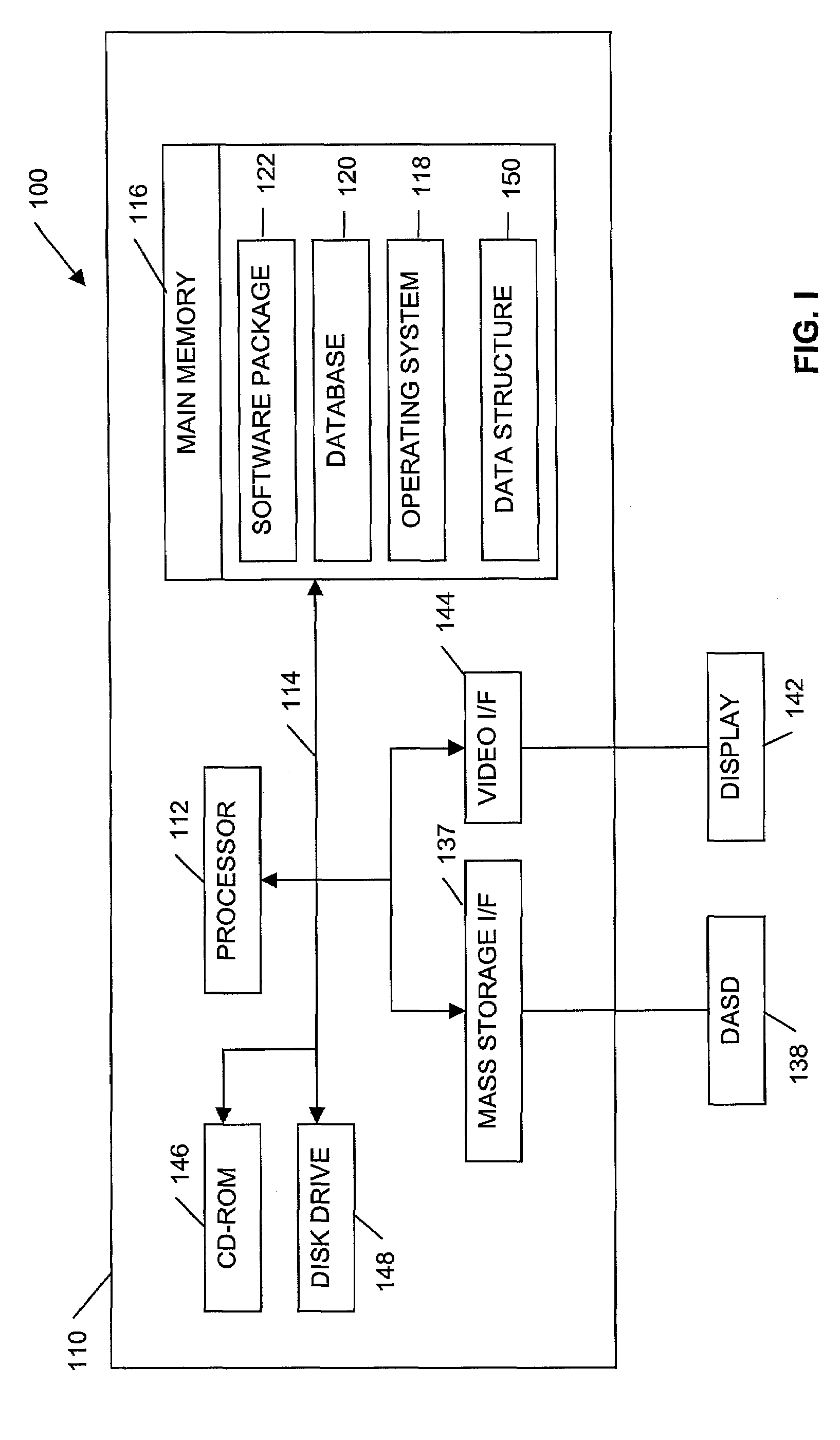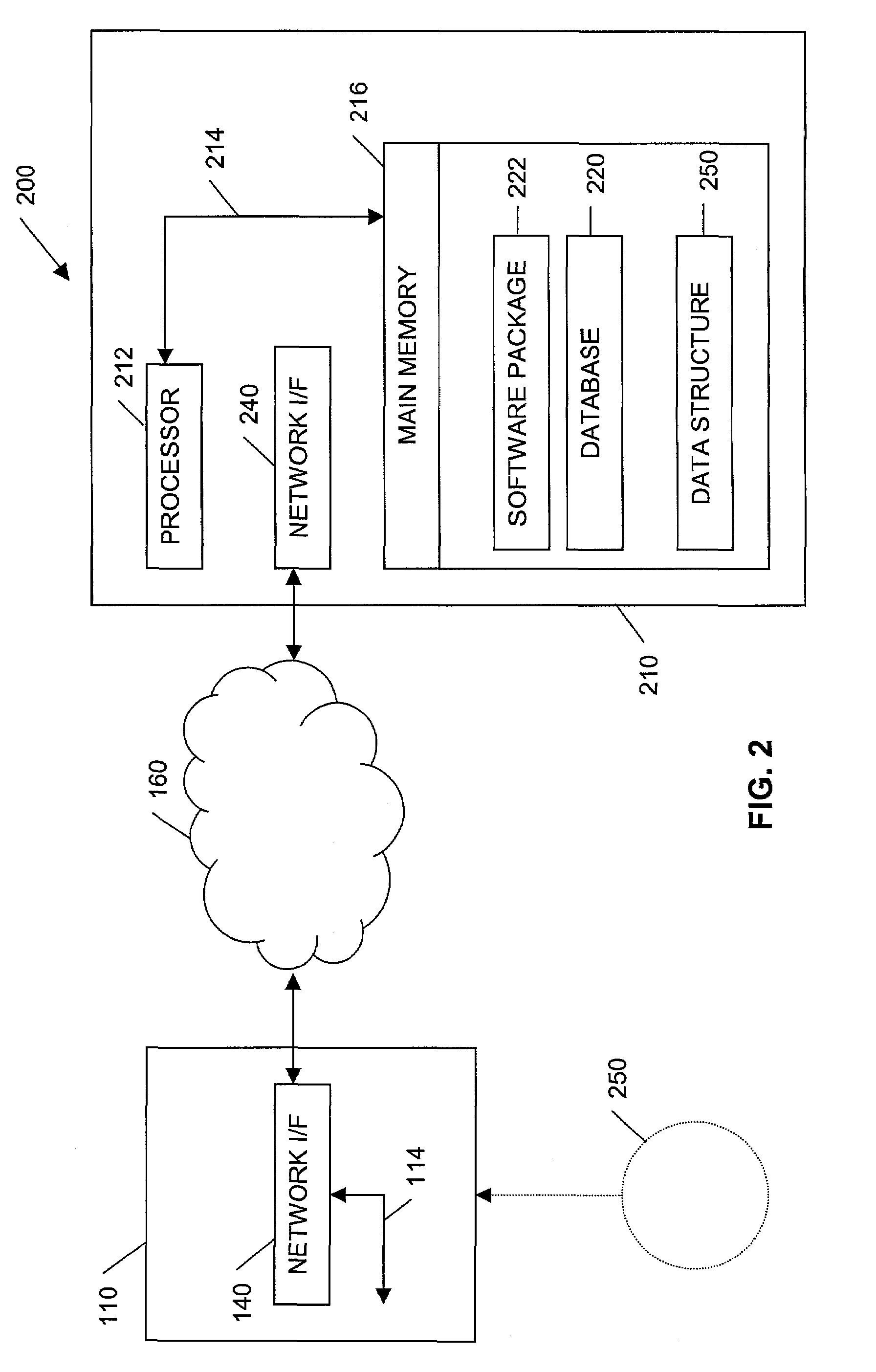[0019]Another aspect of the present invention relates to a data structure in a storage medium, for handling license agreements for multiple software packages in a computer system, each software package being identified by a unique package ID and comprising one or more components. The data structure comprises: an indication of at least one document file, the at least one document file comprising one or more text elements to build a license agreement for a corresponding software package; a unique package ID designating the corresponding software package; and an indication of the one or more components comprised in the corresponding software package.
[0020]Another aspect of the present invention relates to a computer program product on a signal bearing medium comprising a license agreement manager for handling license agreements for multiple software packages in a computer system, each software package being identified by a unique package ID and comprising one or more components. The license agreement manager comprises a first and a second data structure. The first data structure comprises at least one document file comprising one or more text elements to build a license agreement; and at least one manifest file, the at least one manifest file comprising an indication of at least one document file; a unique package ID designating a corresponding software package; and an indication of the one or more components comprised in the corresponding software package. The second data structure comprises a plurality of package IDs; and a plurality of status indications, each status indication being associated with a specific package ID and representing the status of the license agreement for the software package identified by the specific package ID, the status indicating whether the license agreement has been accepted or declined.
[0021]Another aspect of the present invention relates to a computer-readable medium comprising computer-executable instructions for performing an operation for handling license agreements for multiple software packages in a computer system when run in the computer system, each software package being identified by a unique package ID and comprising one or more components, the operation comprising: providing a plurality of document files, each document file comprising one or more text elements; providing a plurality of manifest files, each manifest file indicating at least one corresponding document file of the plurality of document files and comprising a unique package ID designating a corresponding software package; extracting a specific unique package ID from a specific software package; determining a corresponding manifest file from the plurality of manifest files on the basis of the extracted unique package ID; determining the at least one corresponding document file of the plurality of document files on the basis of the determined corresponding manifest file; and combining the one or more text elements comprised in the at least one determined corresponding document file to build a license agreement for the specific software package.
[0022]Another aspect of the present invention relates to a computer-readable medium comprising computer-executable instructions for performing, when run on a computer system, an operation for handling a license agreement for a selected software package of a plurality of software packages upon installation of the selected software package in the computer system, each software package of the plurality of software packages being identified by a unique package ID and comprising one or more components, the operation comprising: providing a plurality of document files, each document file comprising one or more text elements; providing a plurality of manifest files, each manifest file indicating at least one corresponding document file of the plurality of document files and comprising a unique package ID designating one software package of the plurality of software packages; providing a data structure comprising a plurality of package IDs and a plurality of status indications, each status indication being associated with a specific package ID and representing the status of the license agreement for the software package identified by the specific package ID, the status indicating whether the license agreement has been accepted or declined; extracting the unique package ID from the selected software package; and determining from the data structure the status of the license agreement for the selected software package identified by the unique package ID. If the status indicates that the license agreement has been declined: determining a corresponding manifest file from the plurality of manifest files on the basis of the extracted unique package ID; determining the at least one corresponding document file of the plurality of document files on the basis of the determined manifest file; combining the one or more text elements of the at least one determined document file to build the license agreement for the selected software package; displaying the license agreement on a display device of the computer system; and prompting a user to accept or decline the license agreement. In response to the user accepting or declining the license agreement, installing the selected software package only, if the license agreement has been accepted. If the status indicates that the license agreement has been accepted, installing the selected software package.
[0023]Another aspect of the present invention relates to a computer-readable medium comprising computer-executable instructions for performing, when run on a computer system, an operation for handling license agreements for software packages installed in a computer system when initiating a session with the computer system, each software package being identified by a unique package ID and comprising one or more components, the operation comprising: providing a plurality of document files, each document file comprising one or more text elements; providing a plurality of manifest files, each manifest file indicating at least one corresponding document file of the plurality of document files and comprising a unique package ID designating one software package of the plurality of software packages; providing a data structure comprising a plurality of package IDs and a plurality of status indications, each status indication being associated with a specific package ID and representing the status of the license agreement for the software package identified by the specific package ID, the status indicating whether the license agreement has been accepted or declined; extracting the unique package IDs from the software packages installed in the computer system; and determining from the data structure the statuses of the license agreements for the software packages identified by the extracted unique package IDs. For at least one software package, where the status of the license agreement indicates that the corresponding license agreement has been declined: determining the corresponding manifest file from the plurality of manifest files on the basis of the extracted unique package ID of the at least one software package; determining the at least one corresponding document file of the plurality of document files on the basis of the determined corresponding manifest file; combining the one or more text elements of the at least one determined corresponding document file to build the license agreement for the software package; displaying the license agreement on a display device of the computer system; and prompting a user to accept or decline the license agreement. In response to the user accepting or declining the license agreement, enabling the software package, if the license agreement has been accepted, for use by the user; and disabling the software package, if the license agreement has been declined, for use by the user.
[0024]Another aspect of the present invention relates to a computer program product, comprising: (a) a program configured to perform a method for handling license agreements for a software product to be installed on a computer system, the software product comprising one or more packages, the method comprising: (i) determining a license status for the packages in the software product; (ii) identifying software packages having a declined license status; and (iii) prompting the user to accept the identified software packages; (b) a signal bearing media bearing the program.
 Login to View More
Login to View More  Login to View More
Login to View More 


